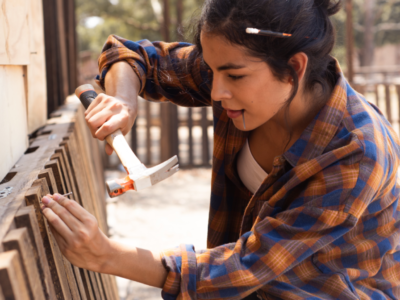A Midsummer Tune-up For Your Lawn
It’s the middle of summer and you’ve got places to go and fun things to do before the weather starts turning and your calendar fills up for fall. Go have a good time, but don’t forget your lawn. You might be on vacation, but grass is a living thing that needs attention in every season.

In the next month or so, grub damage might start appearing. It shows itself as dying patches that can take over your lawn a little at a time and if unchecked, can make it so weak that it can be rolled back like a carpet. It’s caused by the small, white, beetle larvae that feed on the roots of plants. And while the grubs are busily eating your grass, wildlife are attracted to dig up your lawn to feed on the grubs. That’s double destruction for your beautiful lawn. Apply grub control at the right time, and crisis averted.
Here’s what to do:
First, Test to See If You Have Grubs
Visible damage can be seen starting in late July or August. To determine how widespread the infestation is, dig up a few small, representative sections of lawn about a foot square and two inches deep. Your lawn can withstand fewer than five grub worms in a section, but if the count is is ten or more, it’s time to apply grub control. If the average count per section is between five and ten, you’ll have to decide whether the overall health of your lawn is good enough to maintain itself without treatment.
Buy the Right Grub Control
Grabbing whatever insecticide you have in the garden shed isn’t the answer. You risk not getting rid of the grubs and killing your lawn in the process. Make sure you use a targeted product that will aim at grubs when they’re still feeding near the surface of your lawn and before they lay their eggs, killing them and any of their hatchlings before they have a chance to mature. If you’re not sure what to buy, consulting a lawn care professional is probably the best thing to do.
Apply and Water in
Apply the grub control according to directions, and water it into the soil. This not only propels the product down to the thatch layer, but it also encourages the grubs to move upward in the soil and closer to the control product.
Regardless of whether or not you have grubs, it’s important to keep up with regular maintenance of your lawn through the summer to keep it looking fresh despite the heat. Here are some tips:
Be Smart About Watering
Even if water is in short supply in your area, there are ways to conserve and still keep your lawn well-hydrated.
- Water in early morning. This gives the soil time to soak it up before it can evaporate in the heat.
- Water deeply. Wetting just the top layer of soil guarantees it will dry out too quickly. Watering deeply also forces the grass roots to search for water below, making them stronger.
- Water just once or twice a week. An established lawn needs about an inch of water a week. If you can poke a screwdriver into the ground with ease, your lawn is getting enough water.

Keep Up the Mowing
You can’t fool Mother Nature. It might seem easier to let the grass grow tall and then cut it way down, but it’s not good for your lawn and can create other problems.
- Sharpen mower blades. Sharp blades make clean cuts and don’t leave raggedy edges that entice pests and disease.
- Don’t cut too much. Maintaining the grass at the maximum recommended height (2” to 4” depending upon variety) will help shade the soil and retard water evaporation. Don’t mow more than one-third of the length of the blades at full height or you’ll be cutting off nutrients the grass needs to thrive.
- Don’t clean up. Is that a surprise? Since you’re not mowing off very much, you can leave the clippings in place as mulch as well as more evaporation control.
Go a Little Easier on Weeds and Fertilizer
Summer isn’t the time for any broad applications of herbicides that can stress the grass. You can spot-treat contained areas, and hand-pull weeds like dandelions, clover, and chickweed by hand. As for fertilizer, warm season grass does need it during its summer growing season, but go easy because over-fertilizing under a hot sun can burn your lawn.
For a resource full of information about lawns, visit The Lawn Institute.













